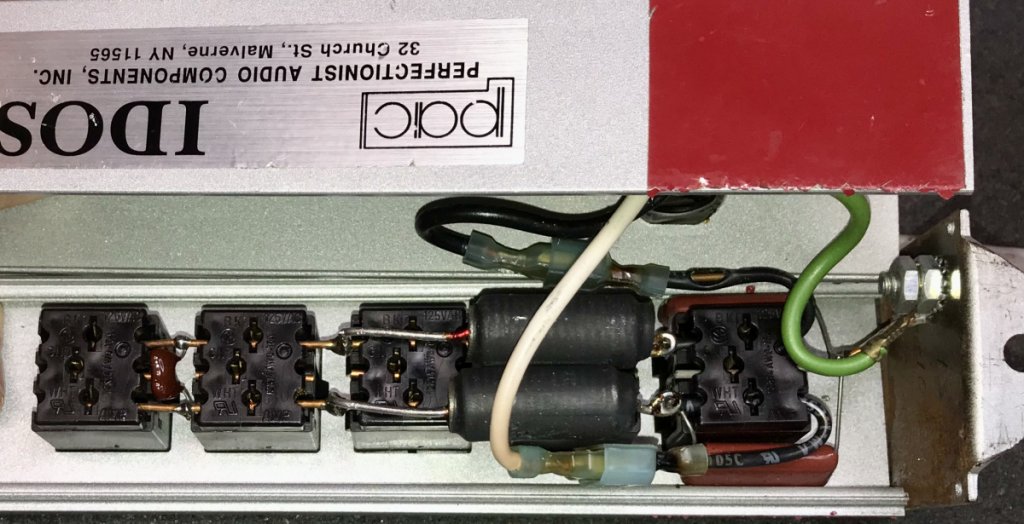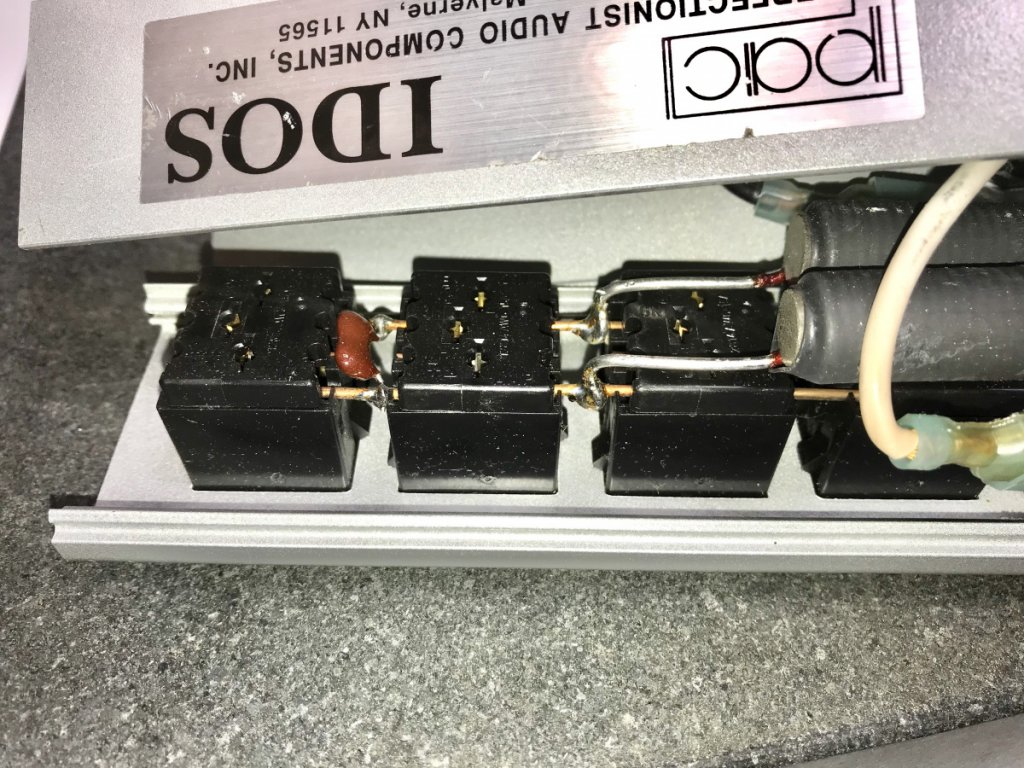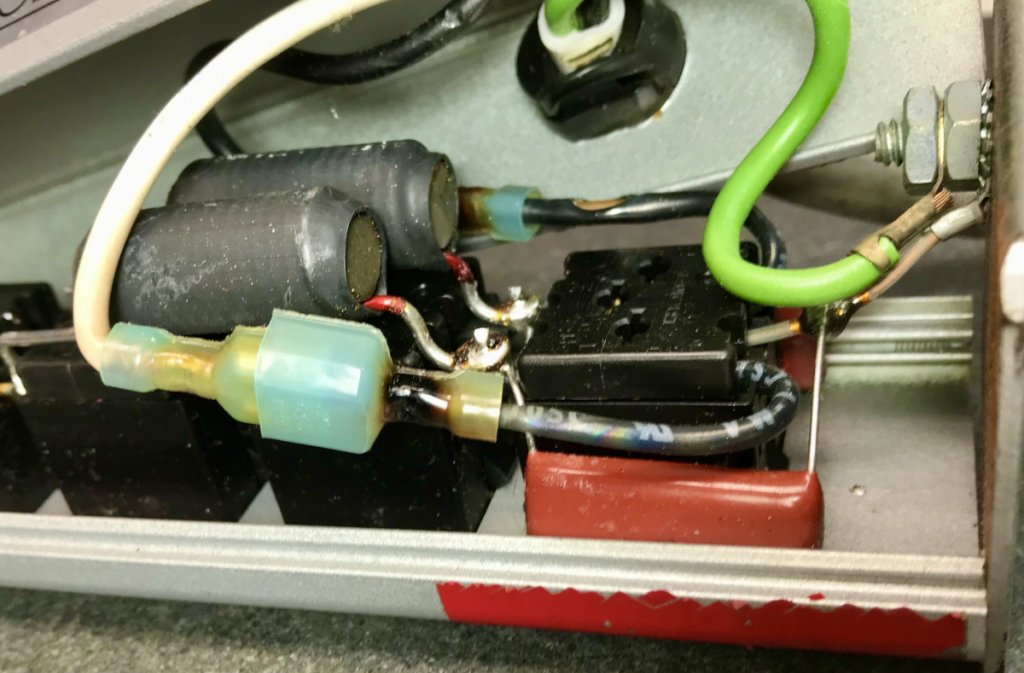I recently was given this ancient (Perfectionist Audio Components) PAC IDOS DC/digital conditioner/power strip and found what's inside interesting. When given old items like this, I always try to look/check inside before powering them up and glad I did with this one as I found some bare wires. It's been sitting in a large bin of cables at a friends shop. It's appears to be helping DC power trapping?
It's appears the first outlet (right/RED) is the only one with a wired ground and has two resistors, the other four are groundless with two caps and another third resistor. Not sure of the values and haven't yet checked. Power cable will be replaced and connectors removed. It was going to be used for a small secondary system with a tv. I'm guessing you would add an adapter for more outlets to the red digital socket and plug in the small DC digital stuff and keep the other sockets for non DC ?
What do you guys think of this piece? Do you think it's doing anything useful and not limiting current for analog (35w-50w integrated amp) in the designated non-digital outlets?
Sorry for the low rez pics, they came out like this when uploading them.



Stock photo:
